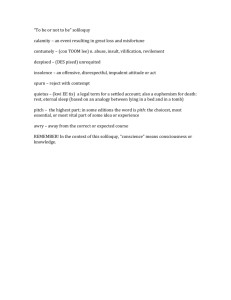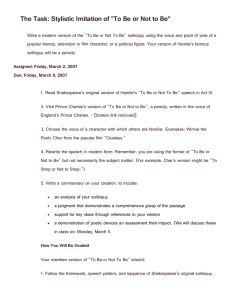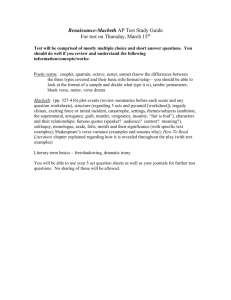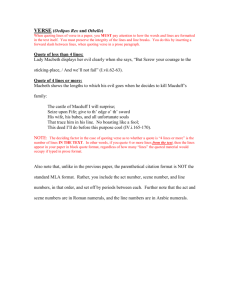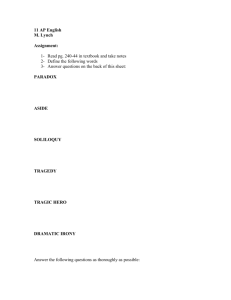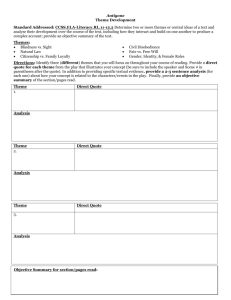A Midsummer Night's Dream: Concept Album
advertisement
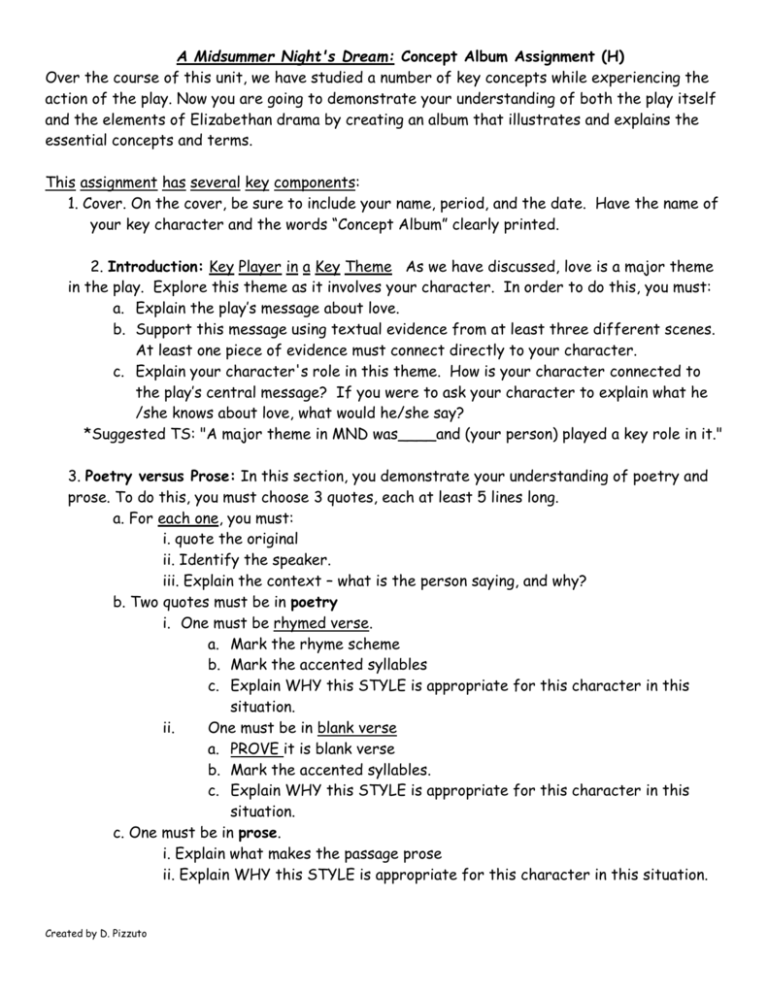
A Midsummer Night's Dream: Concept Album Assignment (H) Over the course of this unit, we have studied a number of key concepts while experiencing the action of the play. Now you are going to demonstrate your understanding of both the play itself and the elements of Elizabethan drama by creating an album that illustrates and explains the essential concepts and terms. This assignment has several key components: 1. Cover. On the cover, be sure to include your name, period, and the date. Have the name of your key character and the words “Concept Album” clearly printed. 2. Introduction: Key Player in a Key Theme As we have discussed, love is a major theme in the play. Explore this theme as it involves your character. In order to do this, you must: a. Explain the play’s message about love. b. Support this message using textual evidence from at least three different scenes. At least one piece of evidence must connect directly to your character. c. Explain your character's role in this theme. How is your character connected to the play’s central message? If you were to ask your character to explain what he /she knows about love, what would he/she say? *Suggested TS: "A major theme in MND was____and (your person) played a key role in it." 3. Poetry versus Prose: In this section, you demonstrate your understanding of poetry and prose. To do this, you must choose 3 quotes, each at least 5 lines long. a. For each one, you must: i. quote the original ii. Identify the speaker. iii. Explain the context – what is the person saying, and why? b. Two quotes must be in poetry i. One must be rhymed verse. a. Mark the rhyme scheme b. Mark the accented syllables c. Explain WHY this STYLE is appropriate for this character in this situation. ii. One must be in blank verse a. PROVE it is blank verse b. Mark the accented syllables. c. Explain WHY this STYLE is appropriate for this character in this situation. c. One must be in prose. i. Explain what makes the passage prose ii. Explain WHY this STYLE is appropriate for this character in this situation. Created by D. Pizzuto 4. Figurative language: In this section you demonstrate your understanding of simile, metaphor, and personification. a. You must have three different quotes. At least TWO must be spoken by your character: i. One quote must contain a simile ii. One quote must contain a metaphor iii. One quote must contain personification. b. For each quote, you must i. Quote the original passage ii. Paraphrase it into modern English iii. Identify the type of figurative language and PROVE it is that. iv. Explain why the figurative language is appropriate for this character in this scene– why did the person say it, and what does it mean? 5. Soliloquy – In this section, you demonstrate your understanding of this key literary device used in plays by creating a soliloquy for a character in the play. a. Choose a character who does not have a soliloquy in the play. b. Find a point in the play where that character would have a REASON to talk to him / herself – a time when, logically, he/she is wrestling with an important issue, feels emotionally torn, etc. c. Next, find a place in the scene when the character could be alone – perhaps a moment when the other characters have left the scene, or a moment between the action (such as the day when Hermia and Lysander have to “starve their sight” or after Titania storms off from Oberon, or when Demetrius is searching for the lovers, etc.) d. Your write-up must include the following: i. An introduction, setting the stage – explain where and when the soliloquy takes place – how is it the character is alone? ii. The soliloquy itself – it must meet our definition of a soliloquy, both in it’s structure and purpose. iii. A paragraph of analysis, in which you explain the soliloquy – why does the character say it, and what does the audience learn? e. This can be written in either poetry or prose – but try to make the voice sound like the character! 6. Movie Analysis. You have watched two very different versions of A Midsummer Night's Dream. Now you are going to analyze how each film changed your character. Specifically, you should focus on this statement: “A drama is brought to life by the people who stage and perform it. The same character, from the same basic script, can be interpreted in totally different ways by different acting companies.” In order to do this, i. Focus on your assigned character. ii. Your goal is to find and analyze at least TWO major changes in your character, as portrayed in the two movies. These can be: a. Changes in traits – is your character stronger or weaker in a particular version? Is he or she more or less aggressive, serious, etc? b. Changes in motivation – do the versions add or remove details and lines that change your character’s motives for what he / she does, or alter his/her goals? c. Changes in attitude towards specific other characters – do additions / alterations in the script change either how your character views someone, or how someone views your character? iii. For each change that you note, you need to PROVE that the particular version has caused this change through alterations / interpretations they have made regarding the text. So, as an example, let’s say you note that your character is a lot more sympathetic towards another character in the 1999 version. You would want to support this with examples from a couple different scenes. For each detail, you would compare / contrast it with the original text, and then analyze how the change in the movie impacts that particular trait. ***Overall, how do these differences change how the audience would view your character in each film?
